Cero Azul 138k, 86m***
The highlight of today was riding through the agricultural workers strike in Pisco. The workers blocked the Pan American Highway – the police said it would be closed for maybe 3 days. Burning tires, rowdy people, rocks on the road. Day by day now, as we approach Lima, there is more traffic, villages and people. We are now out of the massively uninhabited areas of the Andes, the altiplano and the coastal desert.
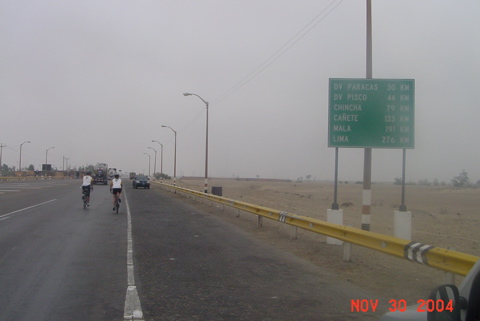
My bike has taken more pounding abuse on this 3,400 mile trip than riding across America, Australia and Europe combined. I brought 4 wheels, 6 tires and 10 tubes along and have used all but a couple of the tubes. For some reason, my spokes, which are only a few months old, are corroding. We had gotten my wheels tuned up in Arequipa and today Eduardo helped me switch to the backup set.
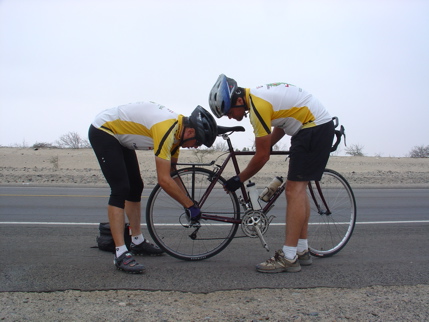
In the morning we rode about 60k/36miles through Ica and Guadalupe along Peru Ruta 1, the Pan American Highway, westward back toward the Pacific. We have not seen the ocean in a couple of days. Lisa and Eduardo alternated riding at 20 and 30 kilometer distances for much of the day. It was fun riding with them and Steve.
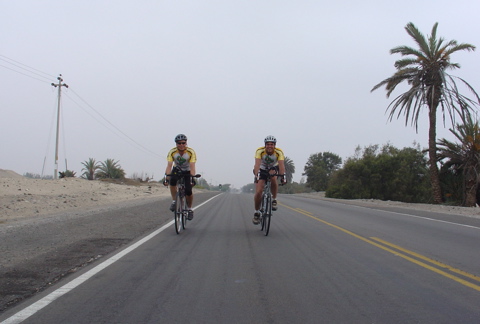
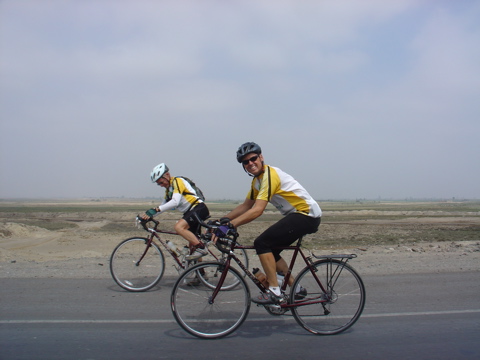
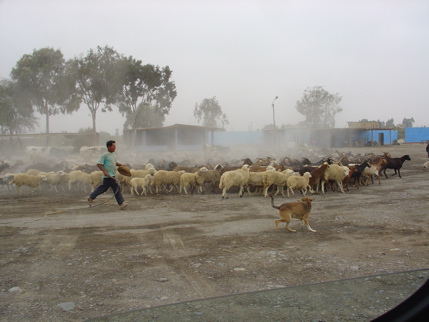
Here, where these goats were along the Pan Am, I saw the sign to the turnoff to the town of Paracas, and the Reserva National de Paracas. Paracas is famous for its topography, the sea life, the sophisticated culture that lived here 1,000 years before the Incas, and for the fact that Peru’s liberator, Jose de San Martin, based here during the revolutionary war with Spain. Eduardo and I turned right and Lisa drove ahead to pick up Steve and bring him back. When we got to the Reserva we visited the tourist center and some of the sights, and took a few photographs.
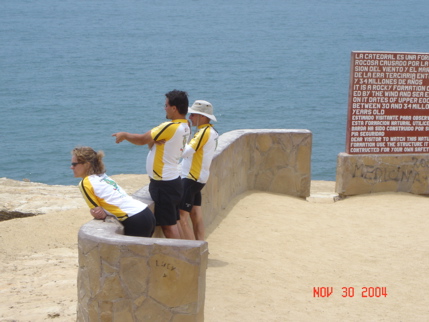
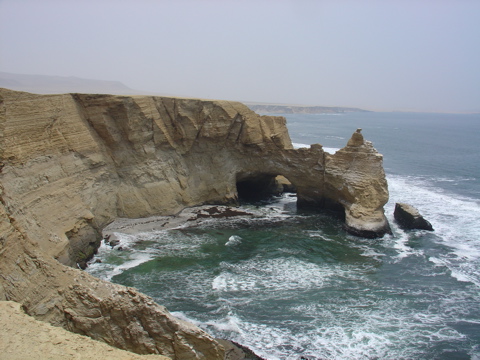
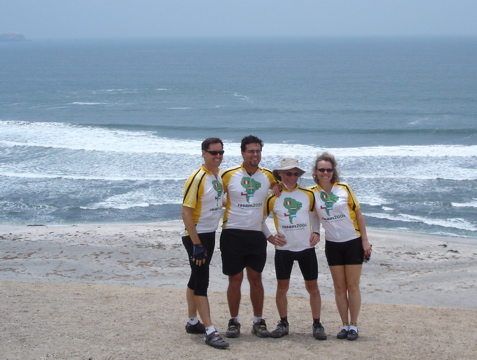
Compared to some of the vistas, nature and archaeology we have seen this was not all that impressive. Then again, it is much closer to lots of people and has been fairly well plundered over the decades. After our visit, we rode out of the fishing village of Paracas and into the dirty larger city of Pisco.
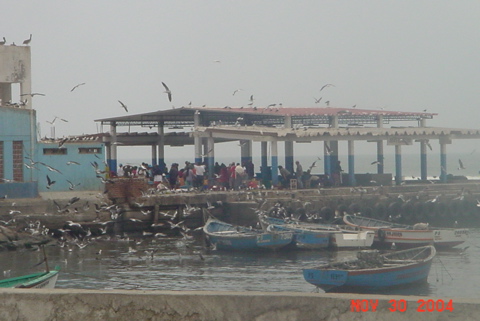
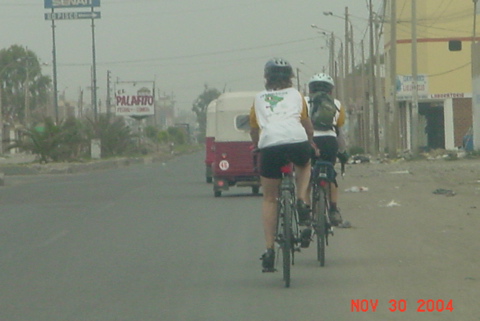
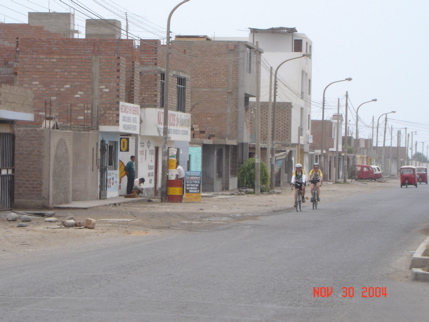
Things were really starting to get ugly – messy homes and businesses, litter all over the place, crowded dirty markets. I, for one, expected better. Pisco is Peru’s national alcoholic beverage – a distilled grape product. Pisco Sours are the most popular drink. Pisco comes from Pisco (and elsewhere). There must be something nice around here, but we did not see it.
As we rejoined the PanAm in San Clemente, about 10k inland from Pisco I took this picture of Lisa and a few hundred feet away of this small, old lady struggling with a large load of wood.
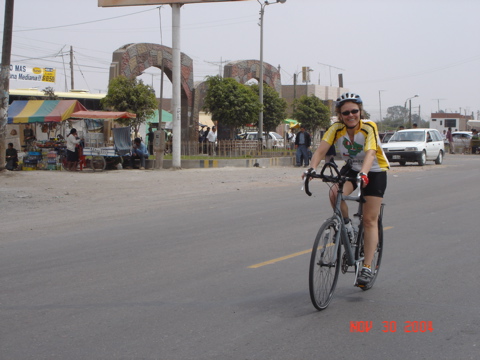
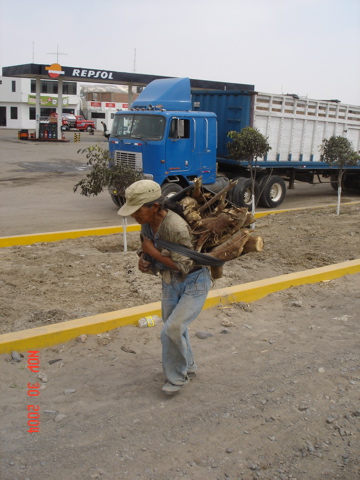
Lisa rejoined Eduaro in the Fiat to get out of the mess. I walkie-talkied back to them to give this lady some Gatorade and food. They did and were much blessed. As I rode ahead I approached a long line of vehicles parked by the roadside, drivers waiting. It was reminiscent of the border crossing form Poland into Belarus, and I assumed that that was what this was. As I crossed to the other side of the street to take a picture, Lisa and Eduardo approached and told me that there was a riot up ahead. Area Peruvian agricultural workers were striking – blocking the road for what could be days.
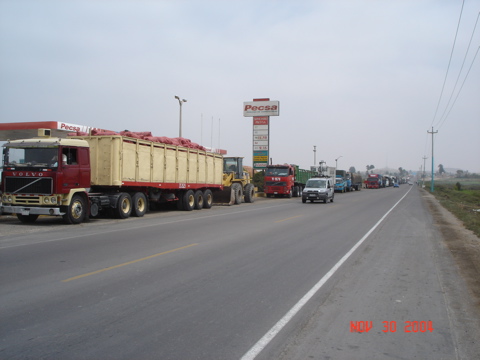
Steve was just ahead and had stopped until someone made a decision on how to proceed. I rode between the rocks and into the crowds.
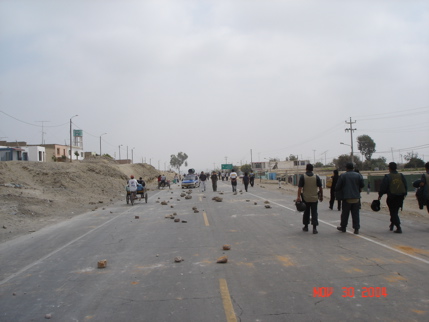
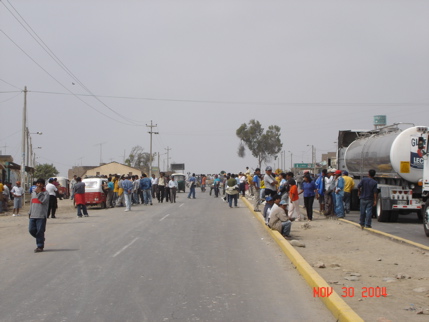
There were loudspeakers blaring, people milling about, piling rocks on the road. At one point they found a front-loader to help in the process. People cheered me, pushed me along, and patted my back. In the most crowded part, I had to walk my bike. I did not want to whip out the digital camera here as I was concerned about people taking my cloth wallet out of my shirt-back-pouch, or trying to raid my rack bag, but I never worried for my personal safety. Steve made it through too, and somehow Eduardo and Lisa found their way around the riot and met us on the other side.
Lisa wanted to try camping out, so after the riot they drove ahead to Canete to get food and such. Steve and I rode through this town, back down to and along the ocean and somehow passed them. Some time later, just after this city of woven huts, Steve had joined Eduardo and Lisa in the Fiat Doblo Adventure and caught up to me.
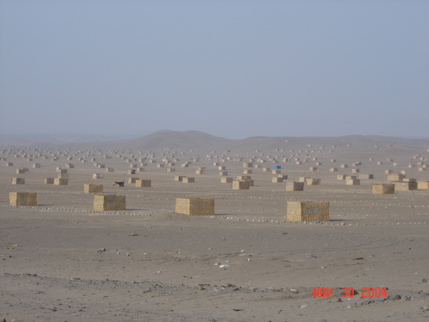
Each home here has a stone-delineated yard. There appear to be some central buildings with shops, electricity and presumably water. People actually live here. We’ve seen hundreds or thousands of these small square homes before, but never so many all at once. Around here, closer to Lima, rather than weaving your own walls and ceilings you can buy them pre-made at the Peruvian version of a Home Depot.
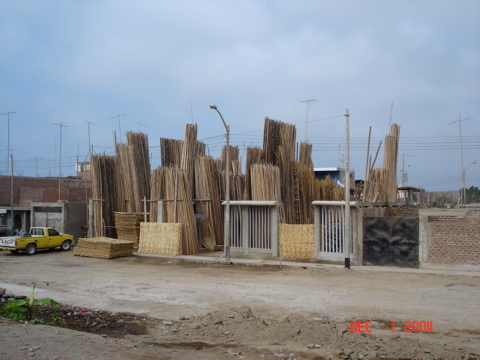
We officially ended the riding day. I joined the team in the Fiat and we set off to the beach to find a campsite. Given the new levels of villages and people, I was skeptical that we would find anything, but we got lucky. (Dalton note: North of Canete is the surfers paradise of Cero Azul (also a major archaeological site). Just north of there we took a sand road toward the beach and found a great place.
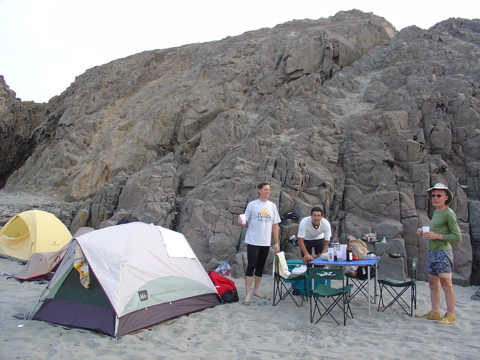
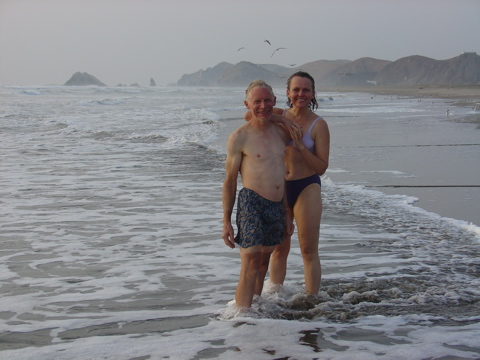
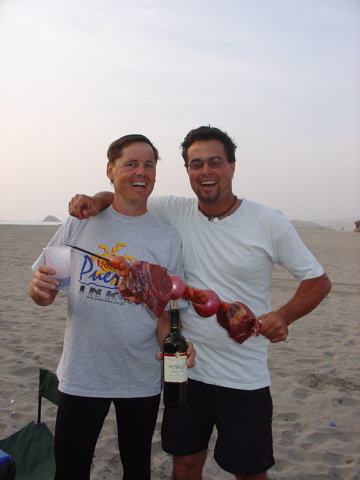
We set up camp, swam in the ocean, and Eduardo gave me a lesson in Brazilian cooking. Fun, fun, fun. Only ONE MORE DAY of riding left!!!

 November 29, 2004
November 29, 2004 